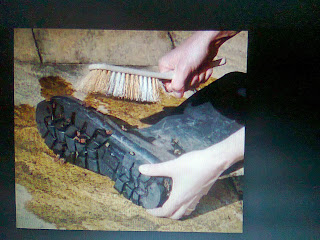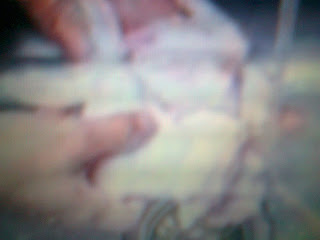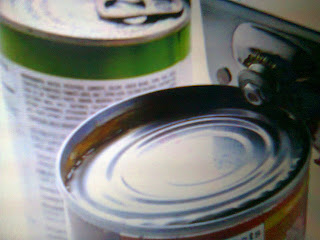Iam one those people who dont like wall geckos,they give me the creeps,haaaaaaaaaaaaaagh. The gekos are useful as far as im concerned to control insects,but who will prefer gekos as natural insecticides instead of chemicals?hmmm ,i thought so.I believe everything was made for a purpose,and that" all things bright and beautiful,all creatures great and small,all things bright and wonderful, the LORD made them all." so i always look out for the good and usefulness in every creature.
This has opened me up to a lot inventions/interventions in the animal world that are of value to the world, did you know that there is power in the gecko feet ,strong enough to hold a weight of 900 pounds without sliding? did you know that adhesive tapes are made from gecko feet that ca be used and re used without any residue? did you know that bonds made from the gecko feet can attach a flat screen on the wall? whaooo,the geko power is fantastic,imagine the possibilities of this type of bond in surgery? my guess is it will replace dermabond soon
THE GEKO POWER;
For years, biologists have been amazed by the power of gecko feet, which let these 5-ounce lizards produce an adhesive force roughly equivalent to carrying nine pounds up a wall without slipping. Now, a team of polymer scientists and a biologist at the University of Massachusetts Amherst have discovered exactly how the gecko does it, leading them to invent "Geckskin," a device that can hold 700 pounds on a smooth wall.
Doctoral candidate Michael Bartlett in Alfred Crosby's polymer science and engineering lab at UMass Amherst is the lead author of their article describing the discovery in the current online issue of Advanced Materials. The group includes biologist Duncan Irschick, a functional morphologist who has studied the gecko's climbing and clinging abilities for over 20 years. Geckos are equally at home on vertical, slanted, even backward-tilting surfaces.
"Amazingly, gecko feet can be applied and disengaged with ease, and with no sticky residue remaining on the surface," Irschick says. These properties, high-capacity, reversibility and dry adhesion offer a tantalizing possibility for synthetic materials that can easily attach and detach heavy everyday objects such as televisions or computers to walls, as well as medical and industrial applications, among others, he and Crosby say.
This combination of properties at these scales has never been achieved before, the authors point out. Crosby says, "Our Geckskin device is about 16 inches square [16 square inches] about the size of an index card, and can hold a maximum force of about 700 pounds while adhering to a smooth surface such as glass."
Beyond its impressive sticking ability, the device can be released with negligible effort and reused many times with no loss of effectiveness. For example, it can be used to stick a 42-inch television to a wall, released with a gentle tug and restuck to another surface as many times as needed, leaving no residue.
Previous efforts to synthesize the tremendous adhesive power of gecko feet and pads were based on the qualities of microscopic hairs on their toes called setae, but efforts to translate them to larger scales were unsuccessful, in part because the complexity of the entire gecko foot was not taken into account. As Irschick explains, a gecko's foot has several interacting elements, including tendons, bones and skin, that work together to produce easily reversible adhesion.
Now he, Bartlett, Crosby and the rest of the UMass Amherst team have unlocked the simple yet elegant secret of how it's done, to create a device that can handle excessively large weights. Geckskin and its supporting theory demonstrate that setae are not required for gecko-like performance, Crosby points out. "It's a concept that has not been considered in other design strategies and one that may open up new research avenues in gecko-like adhesion in the future."
The key innovation by Bartlett and colleagues was to create an integrated adhesive with a soft pad woven into a stiff fabric, which allows the pad to "drape" over a surface to maximize contact. Further, as in natural gecko feet, the skin is woven into a synthetic "tendon," yielding a design that plays a key role in maintaining stiffness and rotational freedom, the researchers explain.
Importantly, the Geckskin's adhesive pad uses simple everyday materials such as polydimethylsiloxane (PDMS), which holds promise for developing an inexpensive, strong and durable dry adhesive.
The UMass Amherst researchers are continuing to improve their Geckskin design by drawing on lessons from the evolution of gecko feet, which show remarkable variation in anatomy. "Our design for Geckskin shows the true integrative power of evolution for inspiring synthetic design that can ultimately aid humans in many ways," says Irschick.
The work was supported by the U.S. Defense Advanced Research Projects Agency (DARPA) through a subcontract to Draper Laboratories, plus UMass Amherst research funds.
________________________________________
Story Source:
The above story is based on materials provided by University of Massachusetts Amherst.
________________________________________
Journal Reference:
1. Michael D. Bartlett, Andrew B. Croll, Daniel R. King, Beth M. Paret, Duncan J. Irschick, Alfred J. Crosby. Biomimetics: Looking Beyond Fibrillar Features to Scale Gecko-Like Adhesion (Adv. Mater. 8/2012). Advanced Materials, 2012; 24 (8): 994 DOI: 10.1002/adma.201290037

 Salt it out,its simple,handy and non toxic.
SALT IN THE MIX# TREAT IT#PREVENT IT.
Salt it out,its simple,handy and non toxic.
SALT IN THE MIX# TREAT IT#PREVENT IT.
 Salt it out,its simple,handy and non toxic.
SALT IN THE MIX# TREAT IT#PREVENT IT.
Salt it out,its simple,handy and non toxic.
SALT IN THE MIX# TREAT IT#PREVENT IT.






















































